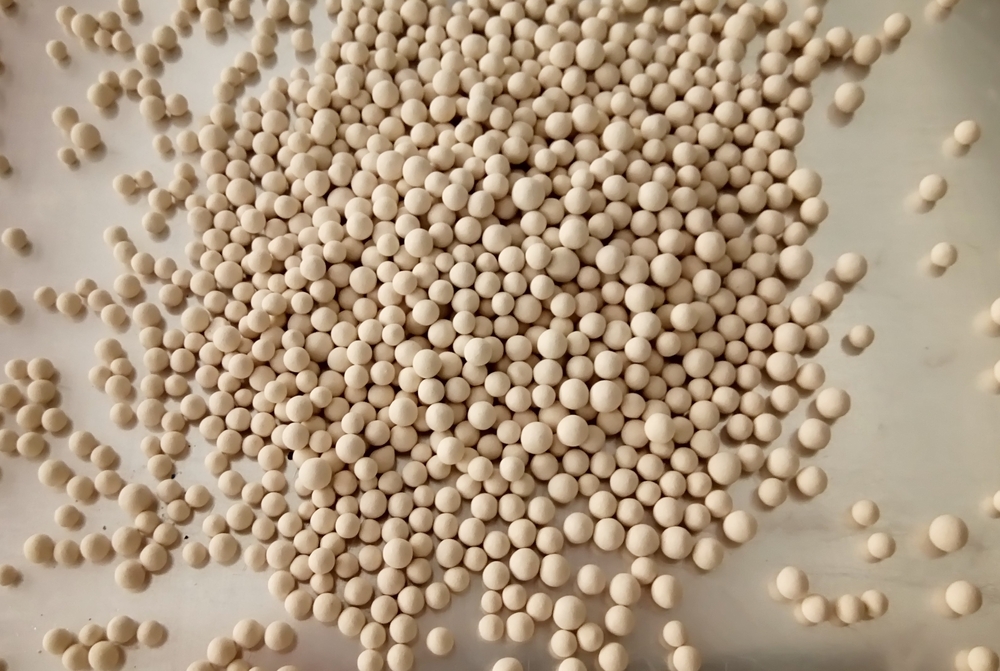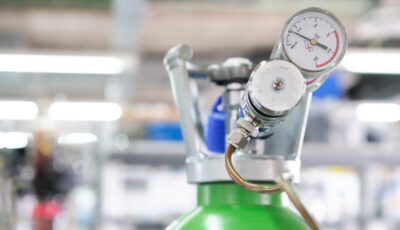PSA Hydrogen Purification Using Molecular Sieves: Applications and Benefits
Molecular sieves are commonly employed in PSA systems for hydrogen purification due to their ability to selectively adsorb impurities such as water, carbon dioxide, and hydrocarbons from the feed gas stream, allowing for the production of high-purity hydrogen. The molecular sieve’s uniform pore structure enables efficient separation, making it an essential component in the PSA process for purifying hydrogen.

Top Features of Molecular Sieves
Molecular sieves are like specialized sponges that can absorb specific molecules while leaving others behind. What makes them stand out in gas and liquid purification processes is their highly porous nature and variety of types. These include 3A, 4A, 5A, and 13X—each designed for precise and effective separation of molecules based on size, making them incredibly versatile for a wide range of applications.
One standout feature of molecular sieves is their exceptional water adsorption capacity and selectivity. They have a natural affinity towards bonding with water molecules, allowing for efficient moisture removal from gases and liquids. This makes molecular sieves especially valuable in the purification of hydrogen, which requires stringent moisture removal to achieve the high purity levels necessary for various industrial applications.
Advantages of Molecular Sieve Selectivity
Let’s take a closer look at the selectivity of molecular sieves:
- Adsorption Capacity: Molecular sieves boast high water adsorption capacity, effectively removing moisture from gases.
- Intrinsic Selectivity: Their intrinsic selectivity enables precise separation during purification processes.
- Application Flexibility: The ability to target different molecules based on size provides flexibility in tailoring purification processes.
Consider a scenario where hydrogen needs to be purified for fuel cell applications. The use of molecular sieves ensures that only water molecules are selectively removed, leaving behind pure hydrogen gas ready for utilization.
Another notable feature is the ability of molecular sieves to separate different gas molecules based on their sizes. This property empowers them to effectively remove impurities and contaminants from gases, resulting in enhanced purity levels.
Understanding these distinctive features gives insight into why molecular sieves are indispensable in the field of gas and liquid purification. Their precision, selectivity, and efficiency make them an invaluable asset in ensuring the purity and reliability of essential industrial gases like hydrogen.
Molecular Sieves in PSA Hydrogen Purification
Imagine a facility producing high-quality hydrogen gas, free from contaminants such as water, CO2, and hydrocarbons. In this process, molecular sieves play a crucial role, working tirelessly behind the scenes to ensure that only the purest form of hydrogen is produced.
When it comes to purifying hydrogen gas, pressure swing adsorption (PSA) is the go-to method. PSA works by cycling high-pressure feed gas through a vessel containing molecular sieves. These molecular sieves have an extraordinary ability to selectively capture impurities and allow pure hydrogen to pass through.
The secret lies within the structure of molecular sieves. Imagine a well-organized grid where only molecules of a certain size can sneak through while others get caught. This selectivity allows molecular sieves to efficiently remove impurities from the feed gas stream.
The PSA Process using Molecular Sieves:
- Adsorption:
- The feed gas containing impurities like water vapor and CO2 is pressurized and fed into a vessel filled with molecular sieves.
- The molecular sieves adsorb these impurities while allowing pure hydrogen to pass through.
- Purification:
- As the hydrogen flows through the sieve bed, the impurities are left behind, resulting in pure hydrogen being collected at the outlet.
- Regeneration:
- Once the molecular sieves are saturated with impurities, the pressure is reduced, initiating desorption or regeneration.
- The bed switchover takes place, allowing the adsorbed impurities to be released and discharged from the system.
- Cycling:
- This cycling process alternates between adsorption and desorption, ensuring a continuous supply of purified hydrogen.
By leveraging this unique characteristic, industrial facilities can produce high-purity hydrogen for a myriad of applications, such as fuel cells, chemical processes, and petroleum refining. This ensures that industrial operations run smoothly without any risk of contamination from impurities like water vapor or CO2.
Now that we have detailed how molecular sieves operate in PSA hydrogen purification, let’s explore the broader applications and benefits of utilizing this advanced process in various industries.
Unveiling the versatility of molecular sieves extends beyond PSA processes; they underscore their prowess in unlocking potent capabilities across multifaceted industrial applications. Let’s now delve into how these tiny but mighty materials boost adsorption efficiency across diverse sectors.
Boosting Adsorption Efficiency with Molecular Sieves
First and foremost, molecular sieves are specially designed to maximize their effectiveness in removing impurities from gases, particularly in the context of PSA hydrogen purification. What sets them apart is their structure, which provides a large surface area for interaction with gas molecules. This means that the sieves can capture more impurities and unwanted substances, leading to substantially higher purity levels in the end product.
The beauty of molecular sieves lies in their ability to form tight bonds with gas molecules due to their intricate pore structures. When hydrogen gas flows through the adsorbent bed containing molecular sieves, the sieves actively capture contaminants such as water, carbon dioxide, and hydrocarbons, thereby purifying the hydrogen stream to a remarkable degree. This robust interaction between the molecular sieves and the gas molecules leads to unparalleled adsorption efficiency.
Furthermore, by providing a vast network of pores with precisely controlled sizes, molecular sieves offer selective adsorption capabilities. This selective nature enables the sieves to target specific molecules while allowing others to pass through unimpeded. In the context of PSA processes, this selectivity plays a critical role in achieving the desired level of hydrogen purity. We can liken this to a highly skilled artisan who meticulously and selectively sculpts an intricate masterpiece.
This combination of large surface area for interaction and selective adsorption is instrumental in driving the efficiency of PSA hydrogen purification processes using molecular sieves. It allows for enhanced removal of impurities, resulting in exceedingly high purity levels for hydrogen—a key objective in industries reliant on pure hydrogen streams.
By optimizing the adsorption process, molecular sieves contribute significantly to the overall effectiveness of PSA hydrogen purification, helping industries attain and maintain stringent purity requirements essential for their operations.
With a greater understanding of how molecular sieves enhance the purification process for hydrogen, let’s now delve into another crucial aspect of selective adsorption.
Importance of Selective Adsorption
Selective adsorption is akin to having a picky eater inside your adsorbent—the molecules comprising the sieve are selective in what they allow to stick to them. Just as a sieve catches bigger particles and lets smaller ones through, molecular sieves are designed to catch certain impurities while allowing the desired hydrogen molecules to pass through. This is critically important in achieving and maintaining the desired purity levels for hydrogen gas, and here’s why.
When it comes to purifying hydrogen, size matters, and not just any sieve can do the job properly. The surface of a molecular sieve is lined with tiny pores of a uniform size that acts like a molecular gatekeeper. These pores are engineered to be just the right size to let hydrogen molecules pass through while trapping larger impurities such as water, carbon dioxide, or hydrocarbons.
The precise control over which molecules are allowed to bind with the molecular sieve contributes to the high selectivity that makes PSA purification so effective. This selectivity is what distinguishes PSA systems from traditional separation methods.
In other words, our molecular sieves can differentiate between different gases based on their molecular size and shape. This way, we can ensure that only impurities are captured by the zeolite while pure hydrogen can conveniently move through the system to achieve the desired purity levels.
Imagine trying to sort out different types of beans. You use a sieve with holes just big enough for kidney beans to fall through, while bigger beans get trapped. In just the same way, our molecular sieves act as a human-sized version of that kitchen strainer except that instead of beans, they’re catching impurities and letting pure hydrogen flow through for optimal purification.
And that’s exactly why selective adsorption is crucial—it’s like having a security guard who lets in VIPs (the pure hydrogen) while keeping out all the unwanted guests (impurities). This precision ensures that final product purity levels are consistently maintained at the desired standards.
With this understanding of how selective adsorption plays its part in refining hydrogen through PSA systems using molecular sieves, let’s now explore its practical benefits in real-world applications.
Influence of Pore Size on Adsorption
Imagine a molecular sieve as a tiny maze. The size of its pores determines which molecules pass through and which are trapped inside. This is where the magic happens – the adsorption process.
Smaller pores are like narrow passages, perfect for catching tiny molecules like water and CO2, while larger pores are more like wide corridors that can snag big hydrocarbons floating around. It’s not just the size of the pores that matters, it’s also their shape and structure that determine what they can trap inside.
For instance, a type 3A molecular sieve has very small pores and can only catch molecules with a diameter less than 3 Angstroms. On the other hand, a type 5A molecular sieve has marginally larger pores and can capture CO2 molecules with sizes of up to 5 Angstroms.
Remember, it’s all about precision here. An ideal molecular sieve should have just the right pore size to selectively trap the targeted impurities without blocking other valuable gases from passing through.
Think of it this way: it’s like sorting candies through differently sized strainers – you use a smaller one for tiny treats like M&Ms, and a bigger one for lollipops or other large sweets. You wouldn’t want your M&Ms getting mixed up with your lollipops, right? In the same way, you don’t want your target impurities mingling with your valuable gases!
The knack lies in understanding your purification needs and matching them with the pore size of the molecular sieve. Let’s explore how pore sizes match specific purification requirements in detail.
Understanding the nuances of pore sizes is pivotal in optimizing hydrogen purification to meet specific industrial needs. Now, let’s navigate through the key steps in the PSA hydrogen purification process.
Key Steps in the PSA Hydrogen Purification Process
Purifying hydrogen gas through Pressure Swing Adsorption (PSA) involves several vital steps to ensure that high-purity hydrogen is obtained efficiently. By understanding and implementing each of these steps, we can optimize the purification process for maximum effectiveness.
1. Adsorption
In the first step of the PSA hydrogen purification process, impure hydrogen gas is passed through a bed of molecular sieves with a specific pore size and structure. This allows them to selectively adsorb impurities from the hydrogen gas while allowing pure hydrogen to pass through. Selective adsorption is crucial for removing impurities such as water, hydrocarbons, and other contaminants from the hydrogen stream.
2. Purge
Once impurities are adsorbed by the molecular sieves, it’s essential to remove them to regenerate the sieve material for the next purification cycle. This is achieved through a process known as purge. The pressure is reduced, leading to desorption of the adsorbed impurities from the molecular sieves. The desorbed impurities are then removed from the system, allowing for the regeneration of the sieve material.
3. Pressurization
Pressurization is a critical step in preparing the sieve bed for the next adsorption cycle. After purging, the sieve bed is pressurized to prepare it for another round of adsorption. Proper pressurization ensures that the molecular sieves are ready to selectively adsorb impurities from the incoming hydrogen gas stream, maintaining a continuous and efficient purification process.
Understanding and optimizing each of these steps within the PSA hydrogen purification process is essential for ensuring reliable and consistent production of high-purity hydrogen gas, enhancing overall efficiency and effectiveness of PSA systems for hydrogen purification applications.
The balance between these three key steps maximizes both purity and yield in PSA processes, leading to significant benefits across various industrial applications requiring high-purity hydrogen.
Now that we’ve laid down a proper foundation with these steps, let’s explore how they work together in greater detail to achieve efficient and effective hydrogen purification using molecular sieves.
Advantages of Molecular Sieves in Hydrogen Purification
Molecular sieves play a critical role in the hydrogen purification process, offering several notable advantages essential to achieving high-quality purified hydrogen. Let’s explore each advantage in detail for a comprehensive understanding of why molecular sieves are a preferred choice for this crucial application.
High Selectivity towards Impurities
Molecular sieves exhibit an exceptional ability to selectively adsorb impurities from hydrogen streams while allowing the hydrogen molecules to pass through. This high selectivity ensures that even trace amounts of impurities, such as moisture, hydrocarbons, and sulfur compounds, are effectively removed, resulting in a remarkably pure hydrogen product. This purity is essential for numerous applications, including fuel cells and petrochemical processes where the presence of impurities can be detrimental.
Exceptional Adsorption Capacity
With their uniform pore structure and precisely engineered pore sizes, molecular sieves boast an outstanding adsorption capacity. This means that they can capture a large volume of impurities relative to their weight, maximizing the efficiency of the purification process. The ability to hold a substantial amount of impurities leads to prolonged service life and reduced operational costs as it minimizes the frequency of sieve replacement, resulting in significant cost savings over time.
Excellent Thermal Stability
The thermal stability of molecular sieves is another standout feature that significantly contributes to their effectiveness in hydrogen purification. When exposed to high temperatures during the regeneration cycle in pressure swing adsorption (PSA) units, molecular sieves maintain their structural integrity and adsorption properties. This exceptional stability allows them to withstand the rigorous operating conditions without sacrificing performance, ensuring consistent and reliable hydrogen purification even under challenging thermal environments.
Recyclability
Another advantage of using molecular sieves in hydrogen purification is their recyclability. After reaching adsorption saturation, molecular sieves can be regenerated through controlled heating, releasing the captured impurities and restoring their adsorption capacity. This recyclability enhances the sustainability of the purification process by minimizing waste generation and reducing the overall environmental impact. The combination of these exceptional features positions molecular sieves as an indispensable component in PSA hydrogen purification systems, contributing to enhanced efficiency, reliability, and cost-effectiveness throughout the entire purification process.
For any inquiries about our molecular sieve products or technical support related to hydrogen purification, feel free to contact us at HengYe Inc. Our team is here to assist you with your hydrogen purification needs.


